
Gentiana verna, the spring gentian, is a species of flowering plant in the family Gentianaceae, and one of its smallest members, normally only growing to a height of a few centimetres.

Phengaris alcon, the Alcon blue or Alcon large blue, is a butterfly of the family Lycaenidae and is found in Europe and across the Palearctic to Siberia and Mongolia.
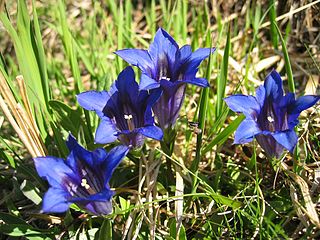
Gentiana clusii, commonly known as flower of the sweet-lady or Clusius' gentian, is a large-flowered, short-stemmed gentian, native to Europe. It is named after Carolus Clusius, one of the earliest botanists to study alpine flora.

Perizoma flavofasciata, the sandy carpet or sandy rivulet, is a moth of the family Geometridae. The species was first described by Carl Peter Thunberg in 1792. It is found in most of Europe and northern Africa and east across the Palearctic to the Urals and the Altai Mountains. The species prefers meadow valleys, floodplains, waterside areas, bushy meadows and gardens. In the Alps it rises to 1500 metres.

Phengaris rebeli, common name mountain Alcon blue, is a species of butterfly in the family Lycaenidae. It was first found and described in Styria, Austria, on Mount Hochschwab around 1700. Although it was initially classified as a subspecies of P. alcon, a European researcher, Lucien A. Berger, designated it as a separate species in 1946. Genetic similarities between P. rebeli and P. alcon have led many researchers to argue that the two are the same species and differences are due to intraspecific variation.
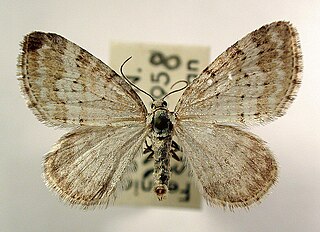
Perizoma albulata, the grass rivulet, is a moth of the genus Perizoma in the family Geometridae. The species was first described by Michael Denis and Ignaz Schiffermüller in 1775.

Perizoma alchemillata, the small rivulet, is a moth of the genus Perizoma in the family Geometridae. The species was first described by Carl Linnaeus in his 1758 10th edition of Systema Naturae.
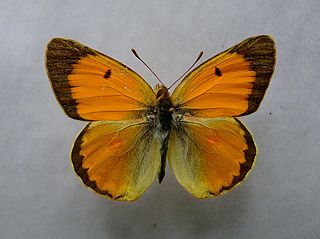
Colias myrmidone, the Danube clouded yellow, is a butterfly in the family Pieridae. It is found from Western Asia, through Southern Russia, Ukraine, Romania, Hungary up to Austria and the Jura Mountains near Regensburg in Germany.

Perizoma is a genus in the geometer moth family (Geometridae). It is the type genus of tribe Perizomini in subfamily Larentiinae. The tribe is considered monotypic by those who include the genera Gagitodes, Martania and Mesotype in Perizoma. Some other less closely related species formerly placed here are now elsewhere in the Larentiinae, e.g. in Entephria of the tribe Larentiini.

Gagitodes sagittata, the marsh carpet, is a moth of the family Geometridae. The species was first described by Johan Christian Fabricius in 1787. It is found in eastern Asia, including Japan, Korea and China and in central and northern Europe. It is sometimes included in the genus Perizoma
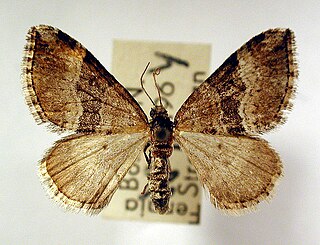
Perizoma bifaciata, the barred rivulet, is a moth in the family of geometer moths (Geometridae). It was first described by Adrian Hardy Haworth in 1809.

Mesotype didymata, the twin-spot carpet, is a moth of the family Geometridae. The species was first described by Carl Linnaeus in his 1758 10th edition of Systema Naturae. Its genus is sometimes included in Perizoma.

Mesotype parallelolineata is a moth of the family Geometridae, subfamily Larentiinae. The species was first described by Anders Jahan Retzius in 1783. It is found in most of Europe, from central Europe through Russia to the Ural and Altai Mountains. Its genus Mesotype is sometimes included in Perizoma.

Perizoma affinitata, the rivulet, is a species of moth of the family Geometridae. It was first described by James Francis Stephens in 1831 and it is found in most of Europe.

Perizoma blandiata, the pretty pinion, is a moth of the family Geometridae. The species was first described by Michael Denis and Ignaz Schiffermüller in 1775. It is found from most of central and northern Europe to central Asia as far as the Khangai Mountains.

Perizoma hydrata is a species of moth of the family Geometridae. It is found from most of Europe and the Caucasus through western Siberia to the Sayan Mountains and Altai and northern Mongolia.
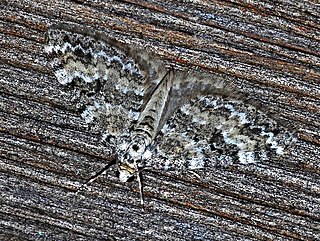
Perizoma minorata, the heath rivulet, is a moth of the family Geometridae. The species was first described by Georg Friedrich Treitschke in 1828.
Stenoptilia graphodactyla is a moth of the family Pterophoridae. It is found in Spain, Belgium, Germany, Poland, the Czech Republic, Slovakia, Austria, Switzerland, Italy, Romania, Bulgaria, Serbia and Montenegro, North Macedonia and Albania. It is also known from Russia.
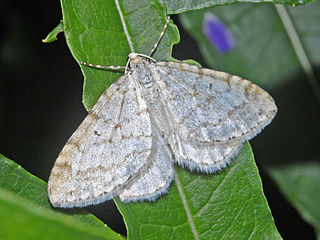
Mesotype verberata is a moth in the family Geometridae first described by Giovanni Antonio Scopoli in his 1763 Entomologia Carniolica.
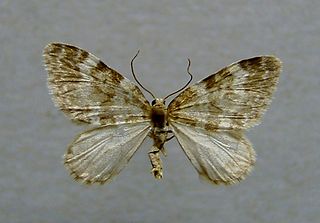
Perizoma incultaria is a species of moth of the family Geometridae. It is found from the Alps to the Carpathian Mountains and the mountains of the Balkan Peninsula.



















